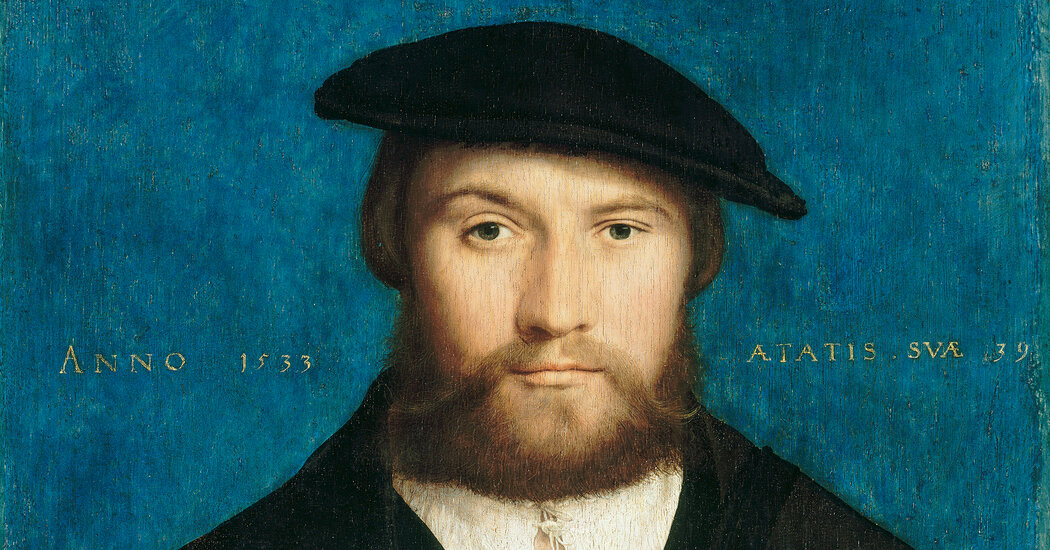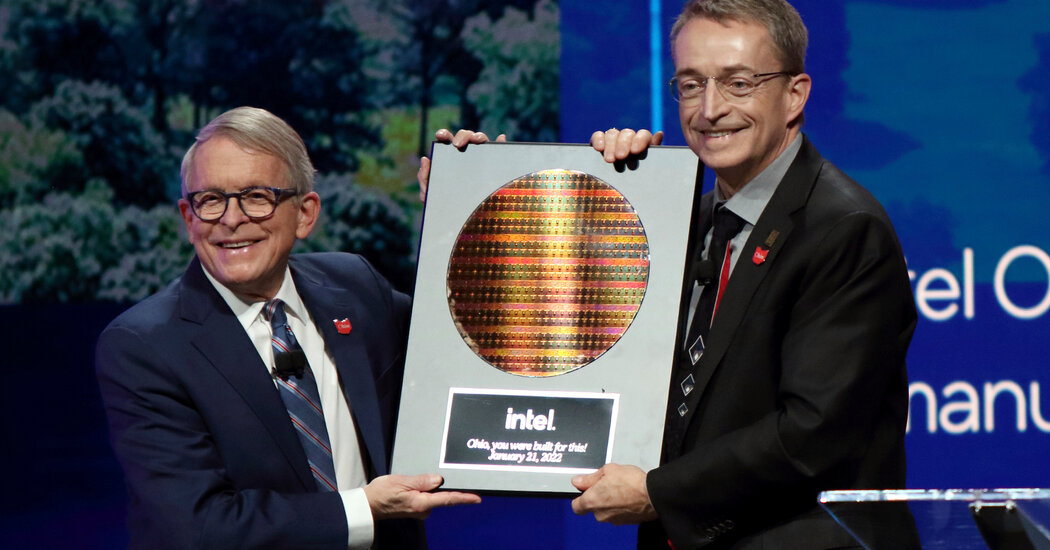
An artistic vision isn’t worth much if there’s no one to pay for it. Just under five centuries ago, in February 1529, Hans Holbein the Younger watches as the citizens of Basel occupy the churches, bludgeon their statues, smash their crucifixes, and throw their altarpieces on burning pyres. It’s a Bildersturm — a “picture storm,” one of the iconoclastic riots against religious images that swept Switzerland and Northern Europe that decade — and among the many destroyed artworks is Holbein’s own painting of the Last Supper. Whatever the German artist thinks of the Reformation (the record is hazy, but he seems to have adopted a soft Lutheranism), he can see that this militant evangelism is going to be bad news for the Swiss art market.
Things keep getting worse, and so in 1532 Holbein bails out of Basel and goes to London. He’d lived there a decade before, seemingly in Thomas More’s house. Now More has fallen, but Holbein finds a new clientele among wealthy German traders with their own special economic zone on the Thames. One of his first commissions is a portrait of a Cologne merchant named Wedigh, whom he paints against a background of glassy blue. For Holbein, Wedigh wears a heavy black cape and a beret of the same fabric. His left hand grips a pair of tan leather gloves, and on that hand is a small signet ring with his family’s coat of arms: three willow leaves segmented by a black chevron.
Holbein pares the portrait down to the minimum: no erudite symbolism, no rich setting, no decorative flourishes. But look at Wedigh’s eyes. The right eye (on the left in the picture) is a tick larger, and the right eyebrow arches just so slightly. To this new era of image politics, Holbein brought a new kind of painting. The enlarged eye offers what no amount of ornament or gilt leaf could deliver: the uncanny feeling that this flat piece of wood represents an individual person, made in God’s image but from this world right here.
Portraits of Londoners in the days of Henry VIII remain the most famous achievements of Hans Holbein (1497 or 1498—1543), and they sit at the center of “Holbein: Capturing Character,” opening Friday at the Morgan Library & Museum, and the first major museum show ever for this cosmopolitan master. The show opened first at the J. Paul Getty Museum in Los Angeles, but it looks quite different here. These paintings are rare and valuable and rather brittle; several major loans were promised to New York or Los Angeles but not both, while other Holbeins could not travel because of pandemic restrictions. (And Holbein knew about those: he lived through the lethal sweating sickness of 1528—29, and might have died of the plague in 1543.)
The Morgan has got the Frick Collection’s portrait of Thomas More, while Los Angeles got the Frick’s severer portrait of Thomas Cromwell; neither has been seen among other Holbeins in a century. The Kunstmuseum Basel has sent a small roundel portrait of Erasmus, Holbein’s fellow immigrant in that Swiss city, but not its larger Erasmus or its still shocking “The Body of the Dead Christ in the Tomb.” The Louvre in Paris, which owns the overly flattering portrait of Anne of Cleves that sparked Henry’s disastrous fourth marriage (Jan. 6 to July 9, 1540), ended up blocking everything. (A satisfying catalog, edited by Anne T. Woollett of the Getty, unites both shows’ checklists, as well as the canceled loans and major works too fragile to move.)
“Holbein: Capturing Character” makes the best of today’s limitations, I suppose. Although portraiture is the focus, it arrays Holbein’s pictures of individuals alongside woodcuts and designs for medallions; paintings and engravings by Albrecht Dürer, Jan Gossaert and other contemporaries; and also signet rings, hat badges and other jewels that rhyme with the accouterments of Holbein’s sitters. There’s even a printed sheet of initial capital letters, each of Holbein’s design, in which grinning skeletons dance around the ABCs: a wonderfully morbid “Death Alphabet” that the Morgan gift shop ought to edition for art-goth greeting cards.
Holbein was born in Bavaria at the end of the 15th century; his father, uncle and brother were all also painters. As a teenager he moved to Basel, which humanists like Erasmus, the printer Johann Froben, and the university rector Bonifacius Amerbach had made into one of Europe’s most fecund intellectual centers.
The young Holbein would quickly become Basel’s leading painter, and with the relatively new medium of oil paint he produced portraits whose persuasiveness came from a blend of technical verisimilitude and humanistic allusions. For Erasmus he designed an emblem based on Terminus, the Roman god of boundaries, and inscribed it with the Latin motto “Concedo nulli”: I yield to no one. One German merchant holds a mathematical diagram in one hand, and by his elbow lies a curling scrap of paper with a line from the Aeneid.
Holbein brought that marriage of technical accuracy and intellectual distinction to London, where in 1536 he was appointed court painter to Henry VIII. This show has only a little official court art, and no paintings of the king or any of his wives. And Holbein’s most famous work is far too valuable to travel from the National Gallery in London: his double portrait “The Ambassadors,” in which two Frenchmen at Henry’s court pose amid globes, musical instruments, and a mysterious anamorphic skull.
But a wondrous portrait of one Simon George, a little-known nobleman from Cornwall, displays Holbein’s incredible ability to forge an individual likeness through both physiognomy and symbols. The beautiful young man stands out from the same rich blue background as the German merchants, and appears in profile in a round frame, like an emperor on a Roman coin. (A preparatory drawing that hangs alongside shows how Holbein first captured George’s concave nose and narrowed gaze, and only later added in the symbols.)
On his hat is a gold badge depicting the myth of Leda and the Swan, and in his right hand is a vibrant red carnation: a mark of fidelity, maybe, or an evocation of Mary’s tears on the Via Dolorosa. This portrait, lent by the Städel in Frankfurt, has been recently cleaned, and you should get up close to examine the astounding detailing of a quilted black leather jacket that would draw looks on the tiles at Danceteria.
To look at the English nobles and German merchants here — not only in the paintings but in gripping chalk drawings of Nicholas Carew and Henry Howard, two courtiers who would both lose their heads — is to see Holbein executing the most delicate balancing act between real and ideal. To represent political power and economic clout, he needed a mastery of optics and color theory and classical history, but also a gaze that cut through pretensions to give the greatest distinction of all: selfhood.
The result was a new kind of image, a truth in painting that no Englishman had yet seen, and that even the sitters themselves could find dumbfounding. Late in Hilary Mantel’s “Wolf Hall,” Thomas Cromwell gazes at his own portrait, the one that just returned from the Getty to Frick Madison, and wonders if it’s true that “I looked like a murderer.” His son looks at the Holbein, looks at his father, and asks, “Did you not know?”
Holbein: Capturing Character
Through May 15, Morgan Library & Museum, 225 Madison Avenue, Manhattan; (212) 685-0008, morgan.org.




